

| An overcrowded caterpillar |

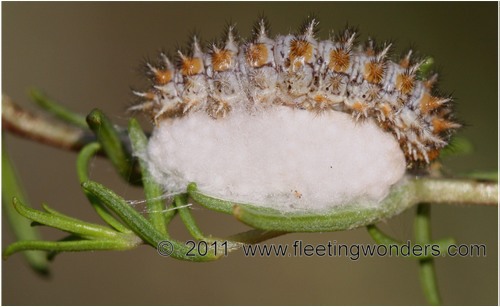 |
This lifeless caterpillar of Melitaea didyma was found by a track in Var (France, 30/07/2011). A mass of small white cocoons was underneath the larva, indicating that it was previously occupied by parasitoid wasps (Hymenopterans). The larva was picked up with the cocoons and put into a transparent box in order to see what would get out of them. On the 2nd of August and during the day after, small wasps emerged out of the white mass... | ||
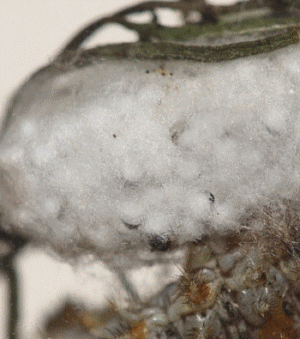 |
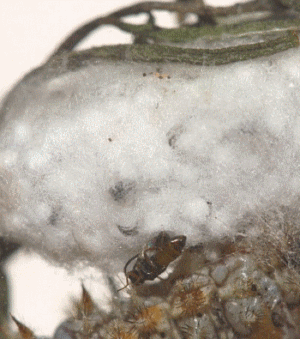 |
||
| Eruption of a male (with a dark and stripped abdomen). The caterpillar, considered as dead, was still making some automatic movements from time to time. |
Eruption of a female (with an orange abdomen ; the ovipositing organ at the end of the abdomen is well visible). |
||
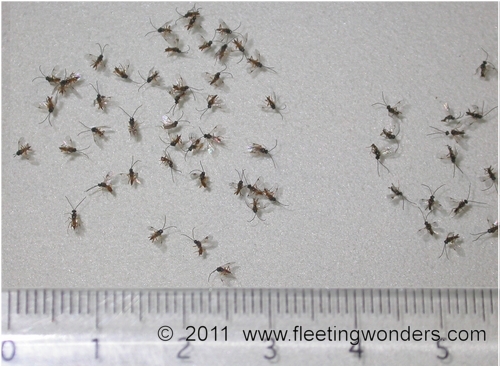 |
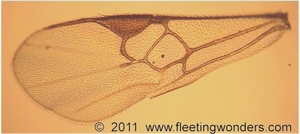 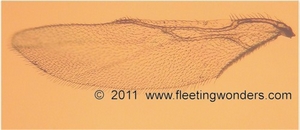 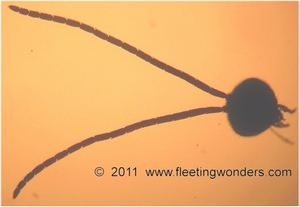 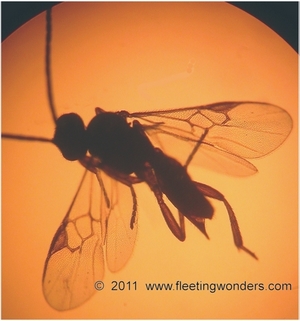 |
||
|
Not less than 15 males (batch on the right) and 43 females (batch on the left) of this small-sized wasp emerged from the cocoons. Thence lots of grubs had been growing inside the caterpillar without killing it before the moment of collective pupation. The fact that there are much more females than males may be a strategy for the parasite to counterbalance difficulties during life-cycle achievement, by producing more life-giving individuals... The possible difficulties for such parasitoids can be : finding quickly a host for laying (short life-time, rarity of caterpillars) and the fact that the number of eggs produced by females is not high. Thus if there are more females, the chances for a successful reproduction increase... After a close examination of the insect, it was possible to identify a wasp of superfamily Ichneumonoidea, family Braconidae, subfamily Microgastrinae. Dr Mark Shaw, a specialist from the National Museums of Scotland, kindly helped name the species here. It appears that this wasp belongs to genus Cotesia and is host-specific parasitoid of M.didyma. It has not been given a species name yet though it used to be named 'Cotesia acuminata'. DNA studies recently proved that the name 'Cotesia acuminata' is in fact a complex of 4 different species of wasps, each one being closely related to a specific butterfly. Thus, the species presented here will soon be given its own name...to be continued... |
|||
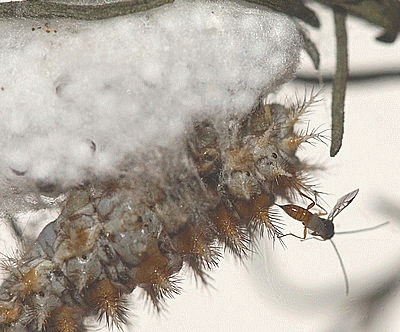 |
|||
| Males and females mated in the box and soon some females were trying to lay their eggs within the lifeless caterpillar... the female here is sticking through the tegument of the larva for ovipositing. In nature, it is likely that a new caterpillar would have been searched by females, but in this case the only possible host was reused. | |||